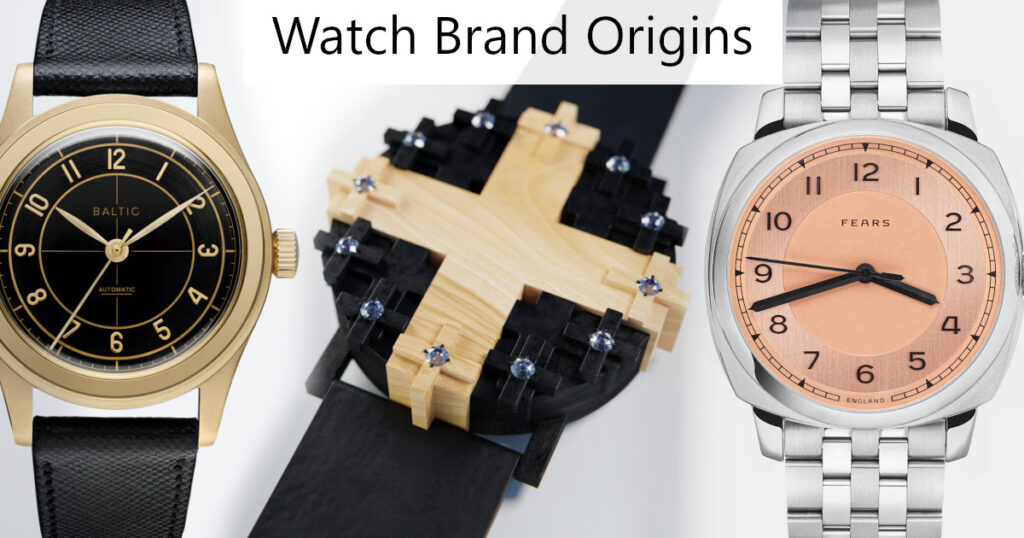
The above image shows our Cross #1 watch in the centre
Sections of this article
- The origins of branding
- The process of founding a watch brand
- Some of the earliest watch brands
- Big name watch brand origins
- Origins of watch microbrands
- How our own brand was founded
Introduction
After a brief look at branding, and the general process of founding a watch brand, this article looks in detail at watch brand origins, first some of the earliest timepiece brands, then some of the bigger watch brands, followed by factors involved in starting a microbrand, some fascinating microbrand founding stories, and finally a look at the founding of our own brand.
The Origins Of Branding
The origins of branding can be traced back to ancient times when livestock owners used distinctive marks to identify and distinguish their animals. These early forms of branding were not only practical for ownership and control but also served as a rudimentary form of advertising, as symbols and marks became associated with the quality of the livestock. The ancient Egyptians further advanced the concept by using branding to mark goods and products, creating a visual identity for their crafts.
As civilizations evolved, so did the concept of branding. In medieval Europe, guilds and craft halls began using marks to denote the origin and quality of products, providing consumers with a level of assurance, continued to this day with the hallmarking of gold and silver.

The Industrial Revolution marked a significant turning point in the history of branding. With the mass production of goods, manufacturers needed a way to differentiate their products in an increasingly crowded marketplace. This led to the development of logos, slogans, and packaging, laying the foundation for modern branding.
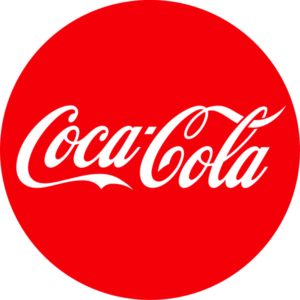
The late 19th and early 20th centuries saw the emergence of well-known brand names, such as Coca-Cola and Kellogg’s, who recognized the power of consistent branding to build trust and recognition among consumers. The concept of brand loyalty became increasingly important as companies sought to create emotional connections with their customers. Advertising and marketing played pivotal roles in shaping brand perceptions, and iconic characters and jingles became synonymous with certain products.
The latter half of the 20th century witnessed the globalization of brands, as companies expanded their reach beyond national borders. The rise of the digital age in the late 20th century and early 21st century further transformed branding. Social media, websites, and online advertising provided new platforms for brand exposure and engagement with consumers.
Today, branding has become a complex and multifaceted discipline, encompassing not only visual elements but also the overall experience and values associated with a brand. Brands are now recognized as intangible assets, and effective branding is seen as a key factor in a company’s success in the competitive global marketplace.
With watchmaking being a highly competitive industry these days, branding is an essential part of the success of a watch brand.
The Process Of Founding A Watch Brand
Founding a watch brand involves a multifaceted and intricate process that combines passion for horology, entrepreneurial acumen, design expertise, manufacturing quality, and strategic marketing. The journey from conceptualizing a brand to delivering timepieces to customers is a challenging yet rewarding endeavour. Here is an overview of the key processes involved in watch brand origins:
Conceptualization and Vision: The journey typically begins with a clear vision and concept for the watch brand. This includes defining the target audience, the brand identity, and the unique selling proposition (USP). Founders often draw inspiration from personal interests, historical references, or a specific niche within the watch market. The conceptualization phase sets the foundation for the brand’s direction and ethos.
Our initial range of watches were chosen to show some of the aesthetic possibilities of our unique brand. Here is one of our watches, Poppy Seed Pod, inspired by the beautiful organic shapes of poppy seed pods:
Market Research: Conducting thorough market research is crucial to understanding the competitive landscape, identifying potential gaps in the market, and gauging consumer preferences. This step involves analysing trends, pricing strategies, and the strengths and weaknesses of existing brands. Market research helps founders position their brand strategically and determine the feasibility of their vision.
Design and Brand Identity: The design process is a pivotal step in crafting a brand’s identity. This involves creating sketches, 3D renderings, and prototypes to bring the envisioned timepieces to life. A distinctive and cohesive brand identity is established through the design of the watch case, dial, hands, and other components. The design phase often includes considerations for materials, movements, and overall aesthetics.
Funding and Financing: Securing the necessary funding to bring a watch brand to fruition is a significant challenge. Founders may seek financing through personal savings, angel investors, crowdfunding platforms, or traditional loans. A well-thought-out business plan that outlines the financial requirements for design, prototyping, production, and marketing is essential for attracting investors or obtaining loans.
Prototyping: Once the initial designs are finalized, the next step is to create prototypes. Prototyping allows founders to assess the practicality of their designs, test different materials, and make necessary adjustments. This phase involves working with manufacturers or skilled artisans to produce physical representations of the envisioned timepieces.
Manufacturing: Choosing the right manufacturing partners is a critical aspect of founding a watch brand. Collaborating with experienced watchmakers or production facilities ensures the quality and precision of the final product. Discussions with manufacturers involve detailing specifications, sourcing materials, and establishing production timelines. The alternative of manufacturing everything in-house is a challenging route forward and requires a lot of experience or learning, as well as large financial resources.
Branding and Marketing Strategy: Developing a strong brand identity and implementing an effective marketing strategy are essential for brand recognition and success. This includes creating a compelling brand story, designing a memorable watch logo, and establishing an online presence through a website and social media platforms. The marketing strategy should also consider how to position the brand in the market, pricing strategies, and promotional activities. This step often has to occur, at least partially, earlier in the process. For example, successful crowdfunding typically requires having built a significant social-medial following before launching the crowdfunding campaign.
Distribution and Sales Channels: Determining the distribution and sales channels is a crucial step in bringing watches to the market. This involves deciding whether to sell directly to consumers through e-commerce, collaborate with retailers, or use a combination of both. Building relationships with retailers, developing an online store, and participating in trade shows are common strategies to establish a brand’s presence.
Legal Considerations: Navigating the legal aspects of founding a watch brand involves trademark registration, ensuring compliance with industry regulations, and protecting intellectual property. Founders may need legal assistance to navigate contracts with manufacturers, suppliers, and distribution partners.
Launch and Post-Launch Strategies: The launch of a watch brand is a milestone that requires careful planning and execution. Founders must coordinate the unveiling of their timepieces, whether through events, online campaigns, or collaborations. The launch needs to be publicised well through appropriate channels. Post-launch strategies include ongoing marketing efforts, customer engagement, and continuous improvement based on feedback.
Founding a watch brand is a comprehensive and intricate process that requires a harmonious blend of creativity, business acumen, and industry knowledge. From conceptualization and design to manufacturing collaboration, marketing, and legal considerations, each step is crucial in shaping the brand’s identity and ensuring its success in the competitive world of horology. The journey is both challenging and rewarding for those who embark on the endeavour with passion and dedication. I’ll be looking at some examples of how watch brands were founded, below, including their inspirations and approaches.
Some Of The Earliest Watch Brands
The history of watchmaking dates back centuries, and while the concept of timekeeping devices predates the existence of specific watch brands, the earliest historical watch brands emerged during the Renaissance period. Prior to the 16th century, portable timekeeping devices were scarce, with mechanical clocks predominantly confined to public spaces like churches and town squares. The evolution of watchmaking from cumbersome timepieces to the elegant and intricate watches we know today began with skilled craftsmen in areas including Switzerland and England.
One of the earliest pioneers in watchmaking was Peter Henlein, a German locksmith and clockmaker who lived in the 15th and 16th centuries. Henlein is often credited with creating the first pocket watch around 1510:
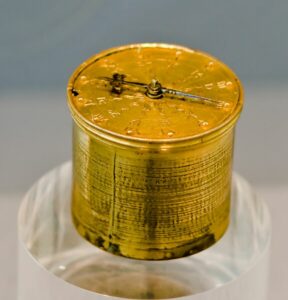
These early timepieces were not as precise as modern watches, due to the limitations of the technology of the period. However, they represented a significant step forward in miniaturizing timekeeping devices to make them portable.
As the demand for portable timepieces grew, particularly among the elite and affluent, watchmakers in Switzerland began to make significant contributions to the industry. Geneva, in particular, became a hub for skilled watchmakers. By the 17th century, Swiss watchmakers had established a reputation for producing high-quality timepieces. The Swiss lever escapement, invented by Thomas Mudge in 1759, greatly enhanced the accuracy and reliability of watches, further solidifying Switzerland’s role in the world of horology. The animation below shows how this works, with the motion of the lever (blue), pallets (red), and escape wheel (yellow):

Watch brand origins in Switzerland. One of the earliest Swiss watchmakers of note was Abraham-Louis Breguet. Born in Neuchâtel in 1747, Breguet is considered one of the greatest watchmakers in history:
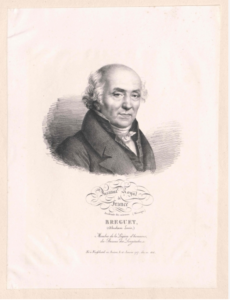
His innovations, including the tourbillon and the Breguet overcoil, revolutionized watchmaking. Breguet‘s watches:
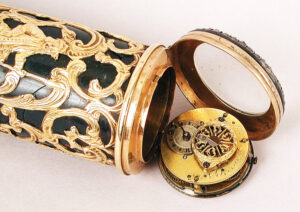
. . . were highly sought after by European royalty, and he received commissions from notable figures such as Marie Antoinette. The image below shows a recent tourbillon:

In England, watchmaking also flourished during the 17th and 18th centuries. London became a significant centre for watchmakers, and renowned craftsmen like Thomas Tompion and John Harrison, who’s improvements in accuracy were revolutionary at the time, made substantial contributions to the field. Tompion, often referred to as the “Father of English Watchmaking,” was a highly skilled clock and watchmaker who crafted exquisite timepieces for the British aristocracy. His work laid the foundation for the development of precision timekeeping:
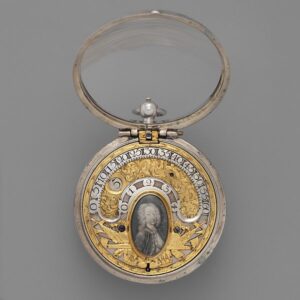
As the 19th century dawned, the industrial revolution brought about significant advancements in watchmaking technology. Mass production techniques allowed for the production of more affordable watches, making timepieces accessible to a broader range of people. This era witnessed the establishment of several enduring watch brands.
In 1833, Antoine LeCoultre founded the workshop that would later become Jaeger-LeCoultre in the Vallée de Joux, Switzerland. The company became known for its precision and innovation, producing some of the world’s thinnest movements and iconic timepieces, owned by Charlie Chaplin, Pablo Picasso, Winston Churchill, and Elizabeth II. The image below shows a Jaeger-LeCoultre watch from 1890:
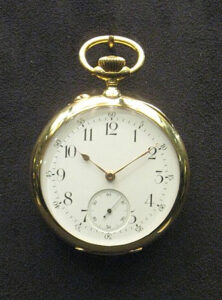
Patek Philippe, another venerable Swiss brand, was founded in 1839 by Antoine Norbert de Patek and Adrien Philippe. Renowned for its craftsmanship and commitment to excellence, Patek Philippe has created some of the most complicated mechanical watches in history and remains a symbol of luxury and prestige.
The 19th century also saw the birth of American watchmaking with companies like Waltham, founded in 1850, and Elgin, established in 1864. The image below shows a Waltham watch from 1877:
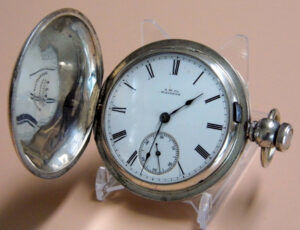
These American brands played a pivotal role in the development of the mass-produced, machine-made pocket watches that became popular during this period.
Big Name Watch Brand Origins
The founding of big-name watch brands often involves visionary individuals with a passion for precision and craftsmanship. These brands have become synonymous with luxury, innovation, and timeless design, shaping the watchmaking industry in significant ways. Let’s delve into the origins of some renowned watch brands and the pioneers behind their success.
Rolex watch brand origins. They were founded by Hans Wilsdorf and Alfred Davis in London in 1905. The brand has become a symbol of prestige and precision. Wilsdorf and Davis initially focused on importing Swiss movements and placing them in quality watch cases. In 1910, Rolex became the first brand to receive the Swiss Certificate of Chronometric Precision, a testament to their commitment to accuracy.
The turning point for Rolex came in 1926 when they introduced the Oyster case, creating the world’s first waterproof and dustproof wristwatch. This innovation positioned Rolex as a leader in durability and reliability. The brand continued to break new ground with the introduction of the perpetual self-winding movement in 1931.
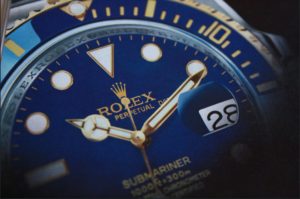
Over the years, Rolex has crafted iconic models like the Submariner (above), Daytona, and Datejust, solidifying its status as one of the most influential watch brands globally.
Omega. Founded in 1848 by Louis Brandt in La Chaux-de-Fonds, Switzerland, Omega has a rich history of precision and innovation. Initially named La Generale Watch Co., Brandt’s sons, Louis-Paul and Cesar, took over the business and rebranded it as Omega in 1903. The brand gained international recognition for its accurate and reliable timepieces.
Omega’s association with space exploration began in 1962 when astronaut Wally Schirra wore an Omega Speedmaster during the Mercury-Atlas 8 mission, leading to its designation as the official watch of NASA, after being the only watch to pass their series of challenging tests:
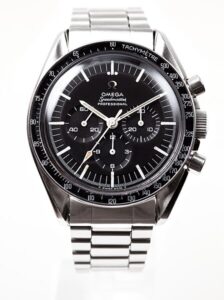
The Speedmaster achieved legendary status when it became the first watch worn on the moon during the Apollo 11 mission in 1969. Today, Omega continues to produce cutting-edge timepieces, combining heritage with modern technology.
Audemars Piguet. Founded in 1875 by Jules-Louis Audemars and Edward-Auguste Piguet in Le Brassus, Switzerland, Audemars Piguet is renowned for its innovative designs and high-quality craftsmanship. The brand established itself as a pioneer in horological complications, creating the world’s first minute-repeating wristwatch in 1892.
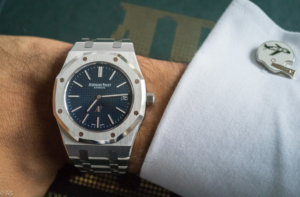
In 1972, Audemars Piguet introduced the Royal Oak (above), a ground-breaking luxury sports watch designed by Gérald Genta. The Royal Oak’s octagonal shape and exposed screws challenged traditional watch design norms and revolutionized the industry. This bold move solidified Audemars Piguet’s reputation as a daring and avant-garde watchmaker.
Tag Heuer. Founded in 1860 by Edouard Heuer in St-Imier, Switzerland, Tag Heuer has been at the forefront of precision timekeeping and sports chronographs. Their commitment to innovation was evident from the beginning, and the brand quickly gained recognition for its accurate and reliable timepieces.
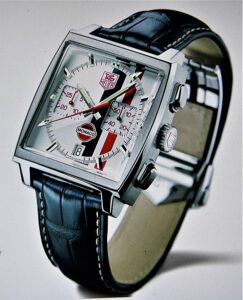
Tag Heuer’s legacy includes the invention of the oscillating pinion in 1887, a key component in modern chronographs. The brand’s association with motorsports began in the early 20th century, and it has since become synonymous with the world of racing. Iconic models like the Carrera and Monaco (above) further cemented Tag Heuer’s status as a leading watch brand.
Recent years have seen the emergence of new players in the watchmaking industry, bringing fresh perspectives, innovative designs, and a blend of tradition and modernity. Here are some recent watch brand origins . . .
Richard Mille. Founded in 2001 by Richard Mille and Dominique Guenat, Richard Mille has quickly risen to prominence for its avant-garde approach to watchmaking. Richard Mille, a former executive at French jewellery company Mauboussin, sought to create timepieces that combined cutting-edge materials and technology with traditional craftsmanship. The brand is known for its distinctive tonneau-shaped cases, skeletonized movements, and the use of high-tech materials like carbon nanotubes.
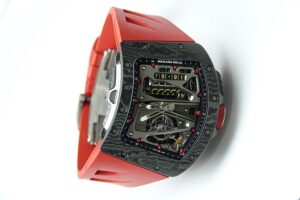
Richard Mille watches are often associated with high-performance sports, particularly motorsports and tennis. The brand’s collaborations with athletes like Rafael Nadal have contributed to its image as a symbol of technical innovation and extreme durability as well as creator of some unusual watches.
Hublot. Founded in 1980 by Carlo Crocco, Hublot gained widespread recognition in the 21st century under the leadership of Jean-Claude Biver and Ricardo Guadalupe. The brand is known for its fusion of traditional watchmaking and contemporary materials, particularly the combination of gold and rubber.
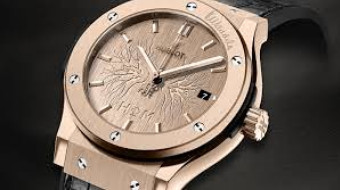
Hublot’s iconic “Art of Fusion” philosophy is evident in its innovative use of materials like ceramic, carbon fibre, and sapphire crystal. The Big Bang collection, introduced in 2005, became a cornerstone of Hublot’s success with its bold design and innovative materials.
In 2008, Hublot became the official watchmaker of Formula 1, further establishing its presence in the world of sports and luxury.
Greubel Forsey. Founded in 2004 by Robert Greubel and Stephen Forsey, Greubel Forsey is renowned for its pursuit of technical excellence and high watchmaking artistry. The brand specializes in producing limited-edition, highly complicated timepieces that showcase exceptional craftsmanship, with some of their watches having only a few pieces made per year.
Greubel Forsey’s timepieces often feature multiple tourbillons, inclined balance wheels, and other intricate complications. The brand’s commitment to precision and innovation is evident in its dedication to pushing the boundaries of traditional watchmaking.
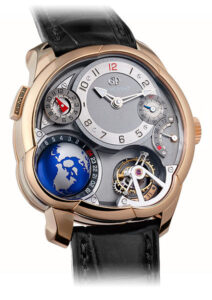
The brand has received acclaim for its Double Tourbillon 30°, Invention Piece 1, and the GMT Quadruple Tourbillon, all of which exemplify the brand’s dedication to horological innovation.
Bremont. Founded in 2002 by brothers Nick and Giles English, Bremont is a traditional British watch brand that has gained recognition for its aviation-inspired timepieces. The English brothers, who come from a family with a passion for aviation, founded the company after a tragic plane crash in which their father died.
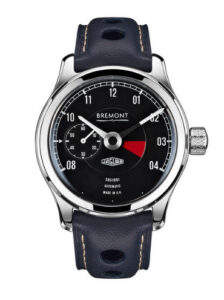
Bremont watches often feature distinctive design elements inspired by aviation instruments, and the brand has developed a reputation for its durability and precision. Bremont’s collaborations with military units, such as the U.S. Navy’s Blue Angels, as well as with Jaguar (above), have further solidified its position as a respected player in the watchmaking industry.
Origins Of Watch Microbrands
The rise of watch microbrands represents a fascinating phenomenon in the watchmaking industry. In contrast to established giants, these small, independent companies often emerge from the passion and vision of a single individual or a small group of enthusiasts. The founding of watch microbrands is a story of entrepreneurship, innovation, and a deep appreciation for horology.
Origins and Motivations: The concept of microbrands began to gain traction in the early 21st century with the advent of online platforms, crowdfunding, and increased access to manufacturing facilities. Enthusiasts who were passionate about watches but lacked the resources to establish large-scale operations found a way to enter the market.
Many microbrand founders are avid watch collectors or industry insiders disillusioned with the lack of diversity and individuality in mainstream offerings. Their motivation often stems from a desire to create unique timepieces that cater to niche tastes, filling gaps they perceive in the market.
Accessible Manufacturing: One of the key enablers of microbrands is the accessibility of manufacturing resources. Advances in technology (such as 3D printing) and the globalization of supply chains allow founders to collaborate with skilled artisans and manufacturers around the world. Aided by computer design tools, microbrands can design, prototype, and produce watches with relatively low upfront costs, making it feasible for passionate individuals to bring their visions to life.
Crowdfunding and Direct-to-Consumer Model: Microbrands often leverage crowdfunding platforms, such as Kickstarter and Indiegogo, to fund their initial production runs. This approach not only provides the necessary capital but also allows founders to gauge market interest and receive feedback directly from potential customers.
The direct-to-consumer model is another defining feature of many microbrands. Cutting out traditional distribution channels allows these brands to maintain closer relationships with their customers, offer more competitive pricing, and maintain creative control over their designs.
Success Stories: Several successful microbrands have emerged, challenging the dominance of established players. One notable example is Christopher Ward, founded in 2004 by Mike France, Peter Ellis, and Chris Ward, a great example of a traditional British watchmaker. The brand focuses on producing high-quality watches at accessible prices, disrupting the traditional luxury segment:
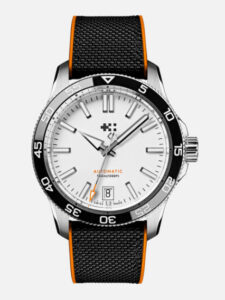
Christopher Ward’s direct-to-consumer model and online presence have contributed to its success in offering value and quality.
Another compelling story is that of Halios, a microbrand founded by Jason Lim in 2009. Halios gained attention for its diver watches known for their design, quality, and limited production runs. By establishing a strong online presence and building a community of dedicated enthusiasts, Halios showcases how microbrands can thrive by connecting directly with their target audience (more on their brand, below).
Challenges and Opportunities: While microbrands bring a fresh perspective to the watch industry, they face challenges such as building brand recognition, establishing credibility, and navigating the competitive landscape. Marketing and differentiation become crucial, and many microbrands leverage limited-edition releases, unique designs, and collaborations to set themselves apart.
The dynamic nature of microbrands also opens opportunities for experimentation and innovation. Freed from the constraints of traditional-thinking board members focusing on profits, conventional production cycles and large-scale investments, microbrands can take risks with design, materials, and complications. This agility allows them to respond quickly to emerging trends and customer preferences.
Community Engagement: Microbrands often foster a sense of community among their customers. Social media platforms, forums, and events create spaces for enthusiasts to discuss, share, and connect over their shared passion for these unique timepieces. This sense of community not only enhances brand loyalty but also provides valuable feedback for continuous improvement.
Here are some examples of watch microbrand origins:
Nodus Watches. Founded by Wesley Kwok and Cullen Chen in 2017, Nodus Watches is a California-based microbrand that emphasizes rugged yet refined timepieces. The founders, both watch enthusiasts, recognized the need for affordable, high-quality watches that could withstand everyday adventures.
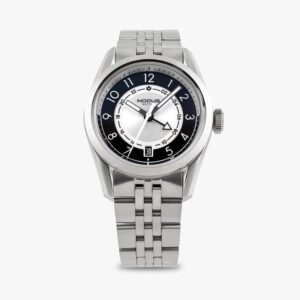
Nodus Watches’ commitment to quality and affordability resonates with a growing community of watch aficionados.
Baltic Watches. Founded by Etienne Malec in 2017, Baltic Watches is a French microbrand known for its vintage-inspired timepieces. Malec’s passion for vintage watches, coupled with his background in design, led to the creation of Baltic Watches. The brand draws inspiration from mid-20th-century aesthetics, crafting watches that capture the spirit of classic timepieces.
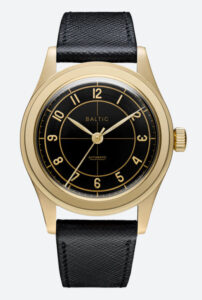
Baltic Watches focuses on delivering high-quality, stylish watches with a nod to horological history.
Farer. Founded by three friends—Jono Holt, Ben Lewin, and Paul Sweetenham—Farer was established in 2015 with a goal to create Swiss-made watches with a British design aesthetic (they are now a great example of a luxury British brand). The founders, inspired by travel and exploration, sought to design watches that encapsulated the spirit of adventure. Farer’s colourful and distinctive designs often pay homage to vintage watch styles while incorporating modern elements. The brand’s commitment to storytelling and unique designs has contributed to its success in the microbrand space.
Zelos Watches. Founded by Elshan Tang in 2014, Zelos Watches is a Singapore-based microbrand that has gained acclaim for its bold designs and innovative use of materials. Tang’s fascination with watches and materials like bronze and meteorite led to the creation of Zelos Watches. The brand frequently utilizes crowdfunding platforms to launch new models, engaging directly with a global community of watch enthusiasts. Zelos Watches’ commitment to pushing the boundaries of design and material selection sets it apart in the microbrand landscape.
Hemel Watches. Founded by Marvin Menke in 2016, Hemel Watches focuses on crafting military-inspired timepieces that pay homage to historical military watches. Menke, a military history enthusiast, sought to create affordable watches with a strong design influence from classic military timepieces. Hemel Watches often incorporates vintage military aesthetics while incorporating modern materials and movements. The brand’s commitment to delivering robust and stylish watches resonates with individuals who appreciate both history and horology.
Undone Watches. Founded by Michael Young in 2014, Undone Watches offers customizable timepieces with a focus on personalization. Young’s vision was to allow customers to create their own unique watches by selecting various design elements. Undone Watches often collaborates with artists, designers, and brands to create limited-edition collections. The brand’s innovative approach to customization and collaboration has garnered attention and a dedicated following in the microbrand community.
Halios. Founded by Jason Lim in 2009, Halios is a microbrand that gained recognition for its diver watches. Lim’s passion for diving and watches led to the creation of timepieces known for their durability and design. Halios watches often feature limited production runs, distinctive designs, and high-quality materials.
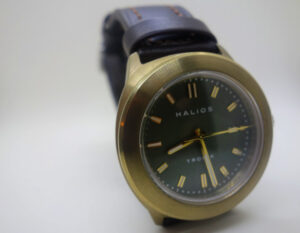
The brand’s success is attributed to its focus on creating timepieces that appeal to both diving enthusiasts and watch collectors, showcasing the intersection of functionality and style.
Oak & Oscar. Founded by Chase Fancher in 2015, Oak & Oscar is a Chicago-based microbrand that combines American craftsmanship with Swiss engineering. Fancher’s goal was to create watches with a distinctive design while maintaining a focus on quality. Oak & Oscar’s timepieces often feature clean, bold designs and attention to detail. The brand’s commitment to limited production runs and collaboration with American artisans has contributed to its appeal among watch enthusiasts seeking unique, well-crafted timepieces.
Fears was founded in 1846, in Bristol, UK, by a young watchmaker called Edwin fear. The business has grown successfully as it passed through generations of the fear family going from Edwin to his son then to his grandson. The brand survived two world wars, with its premises being bombed during the second World War.
The great great great grandson of Edwin Fear, Nicholas Bowman-Scargill went from being an apprentice watchmaker repairing Rolexes, to restarting the family business in 2016. The few British watchmakers at the time were understandably reluctant to give away the secrets of their success so he flew out to a big watch trade show in Switzerland and asked a lot of questions.
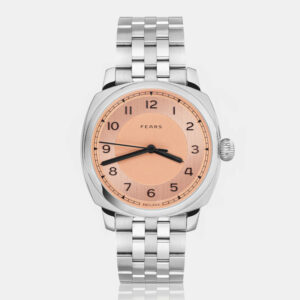
The company was relaunched near the end of 2016. Within three years they’d released the Redcliff ‘Streamline’, inspired by Fears’ original ‘Streamline’ watch from 1946. Nicholas says that there are easier ways of making money than starting a watch company, but if you’ve got a real passion for it, and want to build something for the future, he’s glad he did it. In 2021 the company celebrated its175th anniversary by releasing the ‘Archival 1930’ which is a re-creation of an Art Deco style rectangular watch Fears made in 1930.
Kerran Janin started his own watch brand, Avantist, in Singapore. He started by talking to a lot of experts in Switzerland over the space of a year. He then charted what was popular in the existing market at the price point he wanted to aim for, in terms of things like watch size, weight, shape, materials etc. then worked with leading experts in design, movements, watch cases etc. to create the project, with inspirations from his own origins in Brunei and Southeast Asia.
Mr Navihida, was the founder and the producer CEO of the NH watch company. He had more than 30 years experience in the watch industry, including working in product concept, planning, designing and creating the identity of watches. He chose to start his own brand, with co-founders, after realizing that his ideal watch didn’t exist.
Company founder, Abingdon Mullin, of Abingdonco, “watches for women who do more,” had the idea for the brand when, after finishing pilot training, she realized that there were no pilots watches for women. She founded the brand for adventurous women like herself.
How Our Own Brand Was Founded
UnconstrainedTime is an unusually unique single-founder British microbrand.
In 2013, a dream revealed to me something extraordinary: a vision of how timepieces could transcend their traditional bounds and become pure artistic expression. Not by decorating existing watch designs, but by liberating the entire form to facilitate creativity.
This vision became UnconstrainedTime – where horology meets fine art in its truest sense.
I had no training as a watchmaker and, to be honest, a lot of conventional watch designs didn’t appeal to my aesthetic preferences.
UnconstrainedTime began with the artistic aspects of the sculptures/watches, working with our unique simple 12-point time ring – using a concept that dates back to ancient Near East timekeeping. I initially focused on the visual forms of some watch ideas, getting some of them 3D rendered. I put up an early version of the website but didn’t do much more than a few social media posts at that time.
11 years later I returned to the project, re-working some of the original artistic ideas as well as creating some new ones to show some examples from the wide range of freely chosen creative influences our watches could be based on, and founded the brand as a business.
If you like any of the watches above, make sure you don’t miss our launch . . . Get notifications here.
It was only after I had several of the new artistic sculptures/watches rendered, that I was happy to find that my new brand concept aligned well with microbrand enthusiasts’ desire for unique creativity, the field of conceptual art jewellery, and the authentic definitions of what art really is.
Doing further research and considering the implications of how our watches relate to various fields, I realized that our simple, small-footprint time-display and my lack of background in conventional watchmaking had facilitated much more focus on freely-chosen aesthetics than most watches have. But all of those understandings were after the creativity itself, which is the focus of our watches. These aren’t simply timepieces with artistic elements – they are wearable sculptures that tell time. Each one including its creator’s signature and produced in small, considered quantities.
While researching and developing various aspects of the business, I had 6 different watch concepts that I had created, rendered in 3D by outsource workers, to have visuals of the brand ready to start promoting on our website and social media. Our launch watch, Fractal Emergence (below) was created a few weeks later, as I was considering which would be the best watch to launch the brand with, and is based on fractals, which are one of my long-term artistic obsessions.
While putting together a business plan and researching how things worked, I realized that the conventional routes of finding investors or crowdfunding would both take longer than I wanted to spend on those areas . . . I wanted to get to the point of having real physical watches available as efficiently as possible, so I bootstrapped the brand myself, later obtaining a small start-up loan and help from some family members and friends.
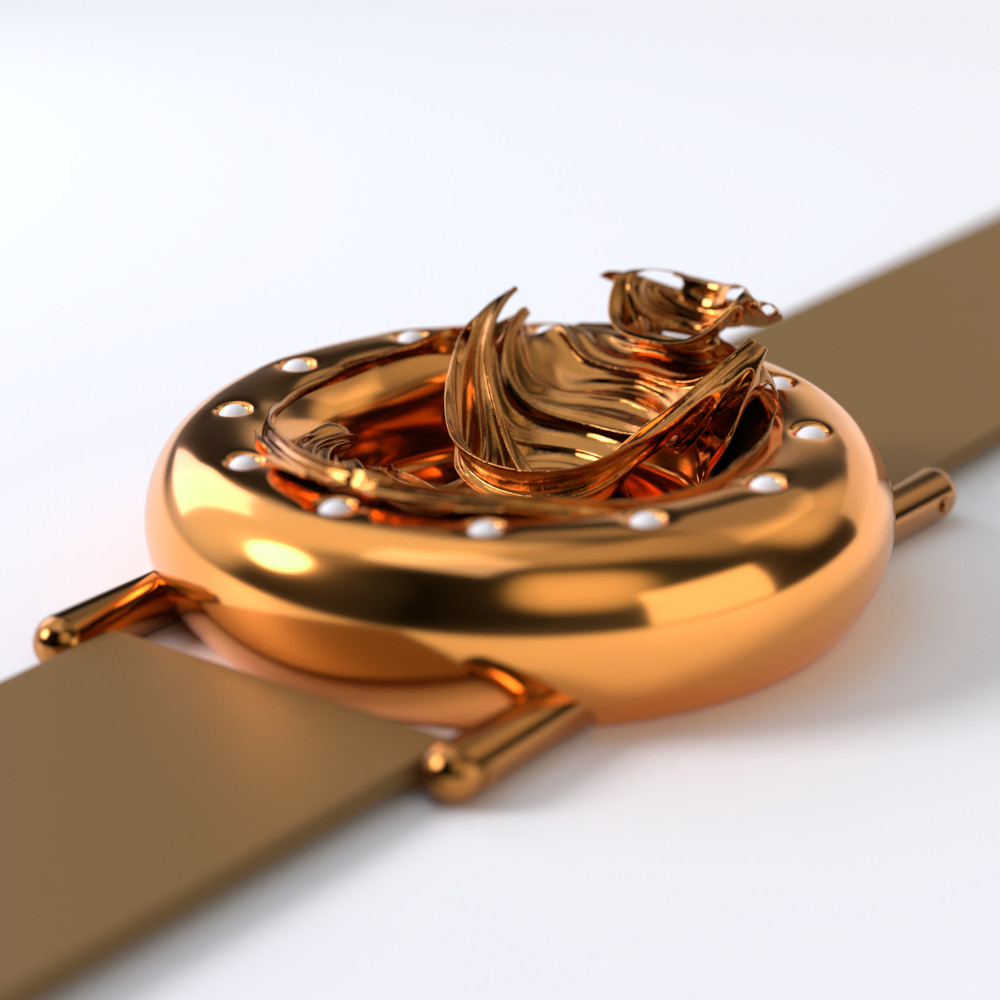
If you’re interested in UnconstrainedTime watches . . .
Don’t miss our launch!
What are your favourite watch brand origin stories? Let us know in the comments below, or on our social media.
Author: Chris Melchior

This article was authored by Chris Melchior, founder of UnconstrainedTime and creator of the original range of wrist-worn sculptures of this unique artistic adventure.
Chris has extensive knowledge and experience of creativity, including fine art and cutting-edge contemporary music composition, and was awarded a First Class Honours Degree in fine art and music with a minor in philosophy.
Chris’s life-long artistic obsessions include organic forms and textures, abstraction, fractals, and the aesthetic essence of musical genres.
He has developed unusually deep insights into the elemental concepts underlying areas including Eastern and Western philosophies, science and technology, creativity and the arts, as well as empirical spirituality in which he is acknowledged as a leading authority.
He has a profound fascination and love for the unique and synergistically creative combination of fine art with the ancient essence of time-keeping which evolved into the UnconstrainedTime project.

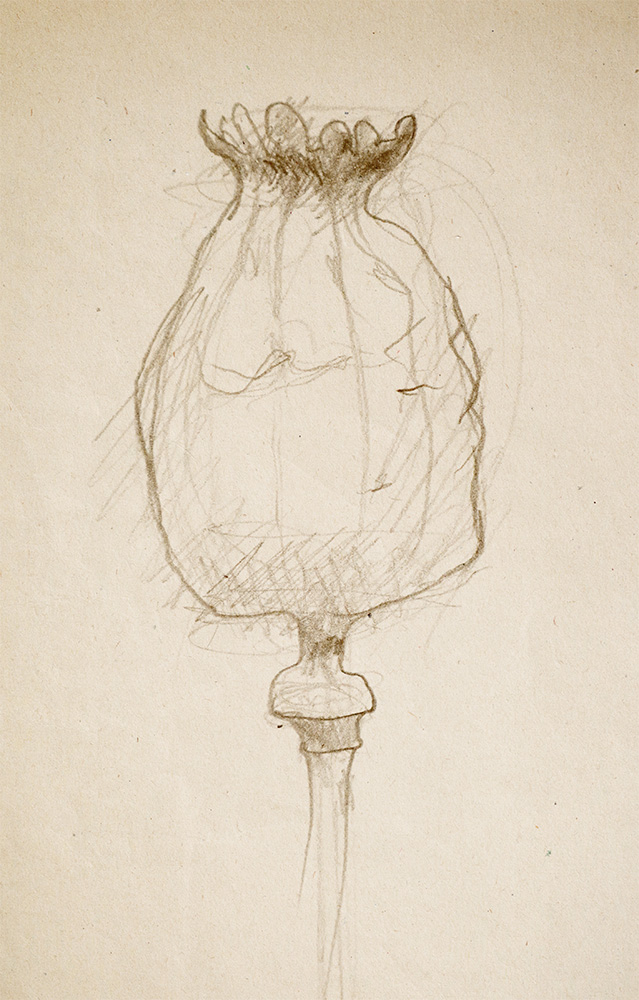
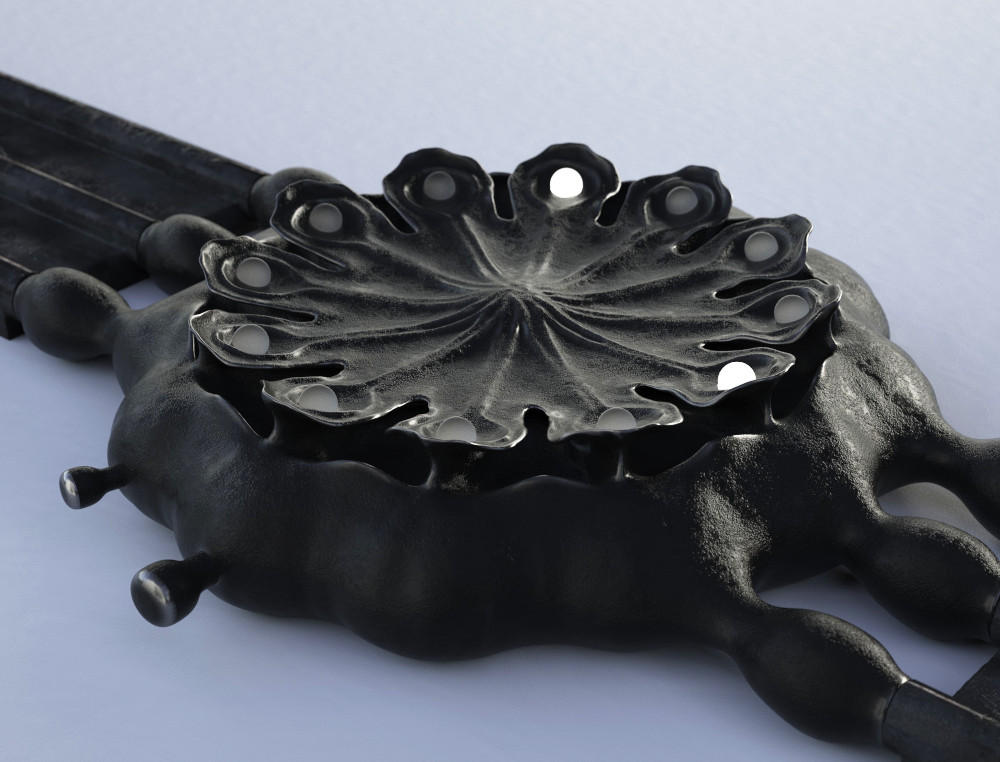

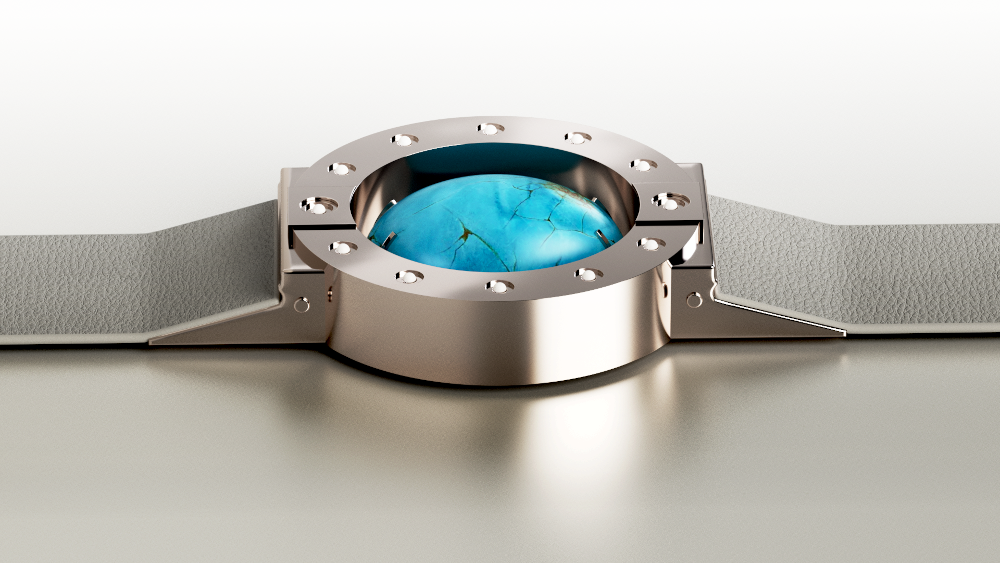


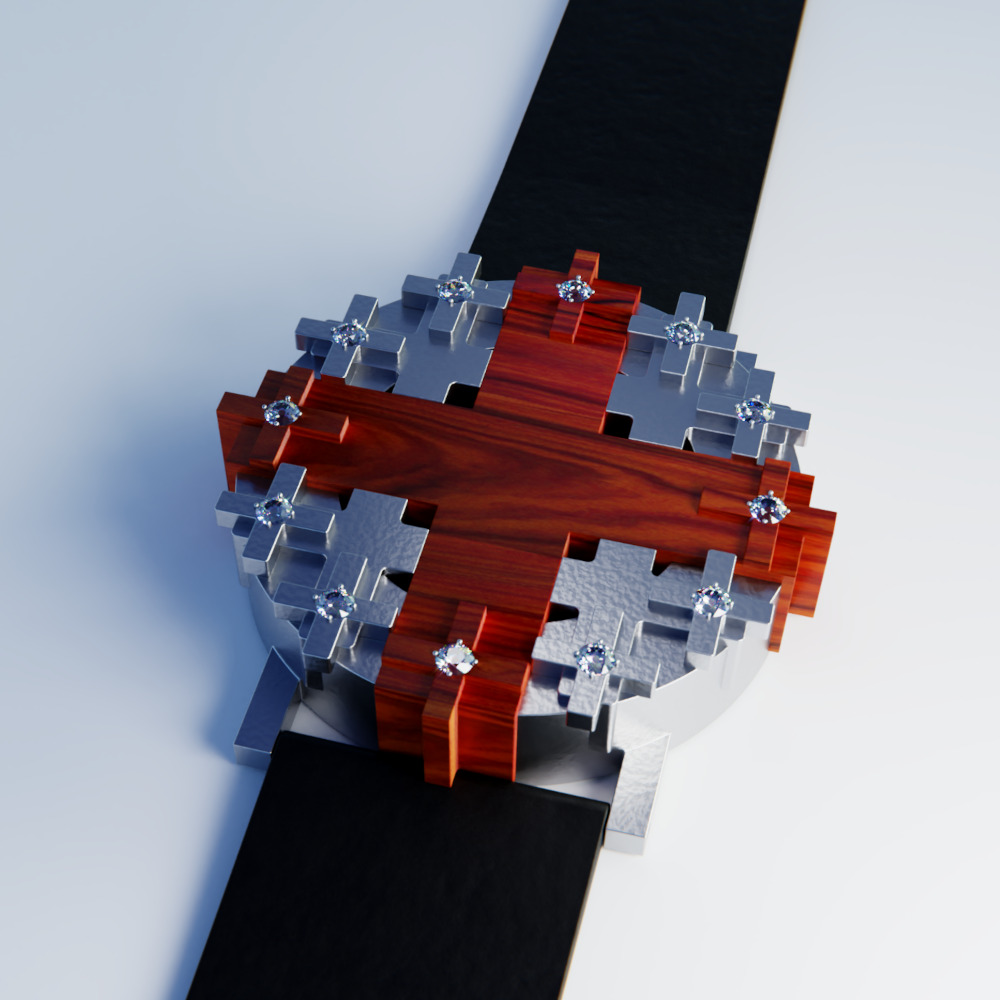
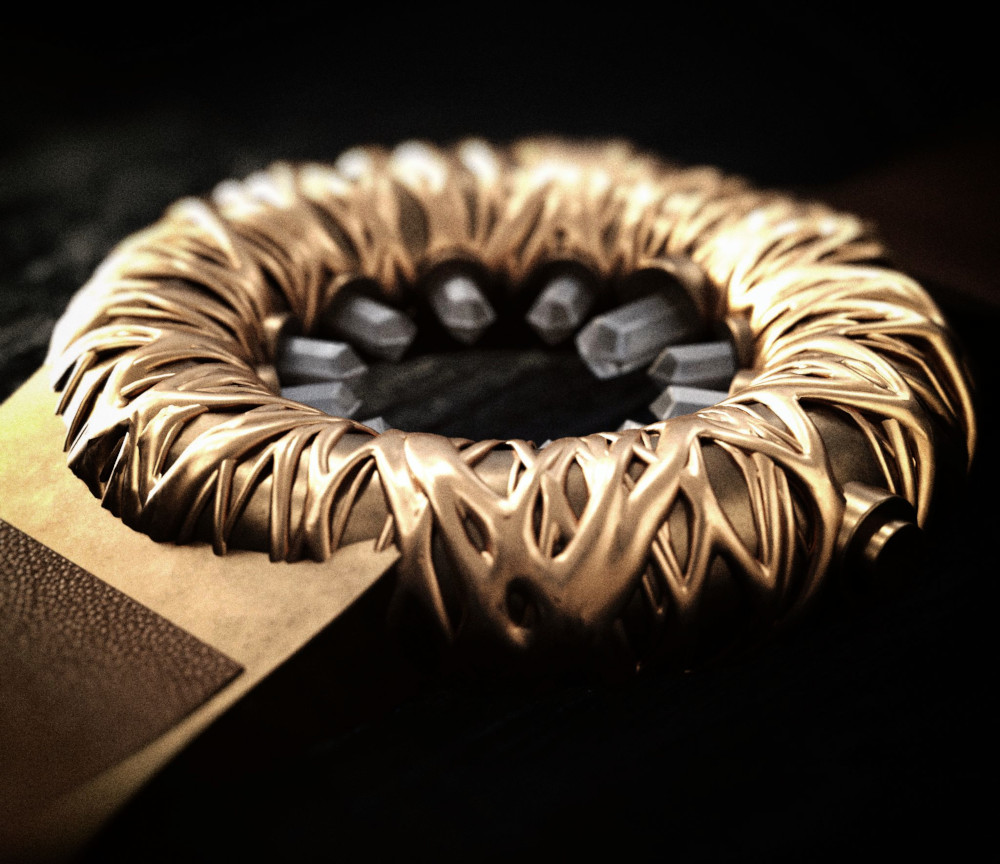
Leave a Reply